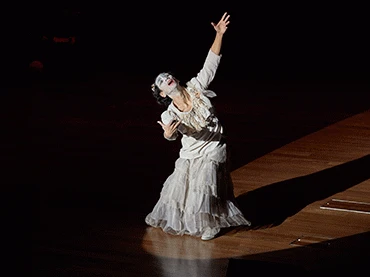
Kawaguchi in About Kazuo Ohno at Museo Reina Sofía, 2018. Photo: Joaquín Cortés/Román Lores © Museo Reina Sofía
Held on 09 oct 2018
“I never watched Kazuo Ohno dance on stage, not while he was alive. But now I see him in photographs and videos. It’s always very beautiful, and though I cannot explain it well, I feel a certain affinity for the twists and undulations of his movements. It even feels sensual. Maybe I have a similar quality within me?”
Taking this question as his point of departure, Takao Kawaguchi (1962) began, in 2013, to explore the possibilities of copying the movements of the acclaimed choreographer Kazuo Ohno (1906–2010) as a way to access the intrinsic and seemingly non-transferable qualities of this figure, central not only in Japanese post-war dance but also the universal history of the discipline in the twentieth century. Ohno is regarded, together with Tatsumi Hijikata, whom he met at the end of the 1950s, as a pioneer of butoh dance, initially called “Ankoku Butoh”, a new, revolutionary language underpinned by spasmodic movements arising from the sub-conscious.
In About Kazuo Ohno Takao Kawaguchi recovers some of the master’s pieces through a methodology which, in some respects, contrasts with their key components; Kawaguchi’s approach does not set out from butoh’s improvisational technique, as one would expect, but literally copies Ohno’s movements — recorded on film and in photographic documents — thus drawing on the archives of the dancer’s first performances of works like Admiring La Argentina (1977), My Mother (1981) and Dead Sea, Ghost, Wienerwaltz (1985), created with Hijikata during a fervent period of collaboration that ended with Hijikata’s death in 1986.
In a sense, About Kazuo Ohno is a duality between Kawaguchi’s faithful replica and the illusory image of Kazuo Ohno, turned by history into an icon and representation of himself. Moreover, Ohno’s dances reprised by Kawaguchi are performed as a duo, for it was Hijikata who held and animated Ohno’s body.
The piece is thought-provoking as much for the spectator who is familiar with Kazuo Ohno’s dance work as the spectator who is not. The former will relive the master’s movements through Kawaguchi; the latter will call upon their imagination to follow the scene. The encounter between the memory of a past figure and the manifestation of his movement in the present prompts a myriad of images, where that which does not exist constantly appears while what we see endlessly vanishes. It is in these contradictions of time where the interest of this piece rests: we feel not so much that we are before a past that returns but before a present which unfolds in broken layers, without the possibility of being capturing in a still image.
The presentation of About Kazuo Ohno in the Museo Reina Sofía, organised in collaboration with Teatros del Canal in Madrid, forms the centrepiece of other related activities: a public conversation with Takao Kawaguchi, sponsored by Fundación Japón, in the Dance Hall of Madrid’s Universidad Carlos III (27 September at 7pm); a workshop by the choreographer in the Canal Dance Centre, organised inside the framework of a collaboration between Museo Reina Sofía and Teatros del Canal (11 October); and the exhibition A Movement that Refuses to Be Pinned Down: Kazuo Ohno and La Argentina, from 10 October 2018 to 15 February 2019) in Space D of the Museo Reina Sofía Library and the Museo’s Documentation Centre. The show will assemble different materials such as photographs, drawings and films to take us on an affective journey, with the frame of reference a photograph of a specific scene from the celebrated solo Admiring La Argentina, created in 1977 by Tatsumi Hijikata and Kazuo Ohno in an attempt to recover the movements of the Spanish artist Antonia Mercé y Luque, La Argentina (1890–1936).
Curatorship
Isabel de Naverán
In collaboration with
Teatros del Canal de la Comunidad de Madrid
Related activities (other institutions)
A conversation with Takao Kawaguchi, organised by Universidad Carlos III and sponsored by Fundación Japón (Dance Hall, Universidad Carlos III, 27 September 2018)
Organised by
Museo Reina Sofía
In collaboration with
Participants
Takao Kawaguchi (1962) is a choreographer, performer and artist. After working for the dance company ATA DANCE, with Atsuko Yoshifuku, he became a member of the collective Dumb Type between 1996 and 2008, as well as collaborating with visual artists, working with light, sound and video. Since 2008 he has developed his solo series of site-specific performances under the general title A perfect life until today, which includes From Okinawa to Tokyo, presented at the 2013 Yebisu International Festival for Art and Alternative Visions, in the Tokyo Photographic Art Museum. Most recently he has created butoh dance pieces like The Ailing Dance Mistress (2012), based on the writings of Tatsumi Hijikata, and About Kazuo Ohno-Reliving the Butoh Divaʼs Masterpieces (2013).
Kawaguchi Kawaguchi has worked on a broad array of research and artistic creation projects, for example: True (2007) and Node-The Old Man of the Desert (2013), together with Dumb Type member Takayuki Fujimoto and Tsuyoshi Shirai, and Tri-K (2010), with Dick Wong and Koichi Imaizumi. He was also the director of Tokyo’s International Festival of Gay and Lesbian Cinema between 1996 and 1999, and has translated Chroma (2003, Uplink), a book by experimental film-maker Derek Jarman, into Japanese. Furthermore, Kawaguchi was involved in Edmund Yeo’s Kingyo, a short film which competed at the Venice Film Festival in 2009.
This activity is part of the Performing Arts Series designed by Teatros del Canal and the Museo Reina Sofía.
Technical sheet
Choreography: Kazuo Ohno and Tatsumi Hijikata
Concept and performance: Takao Kawaguchi
Dramaturge, video and sound: Naoto Lima
Costume: Noriko Kitamura
Stage and lighting director: Toshio Mizohata
Appearance in video: Yoshito Ohno
Production: Toshio Mizohata
Archive materials: Courtesy of the Kazuo Ohno Dance Studio and CANTA Ltd.

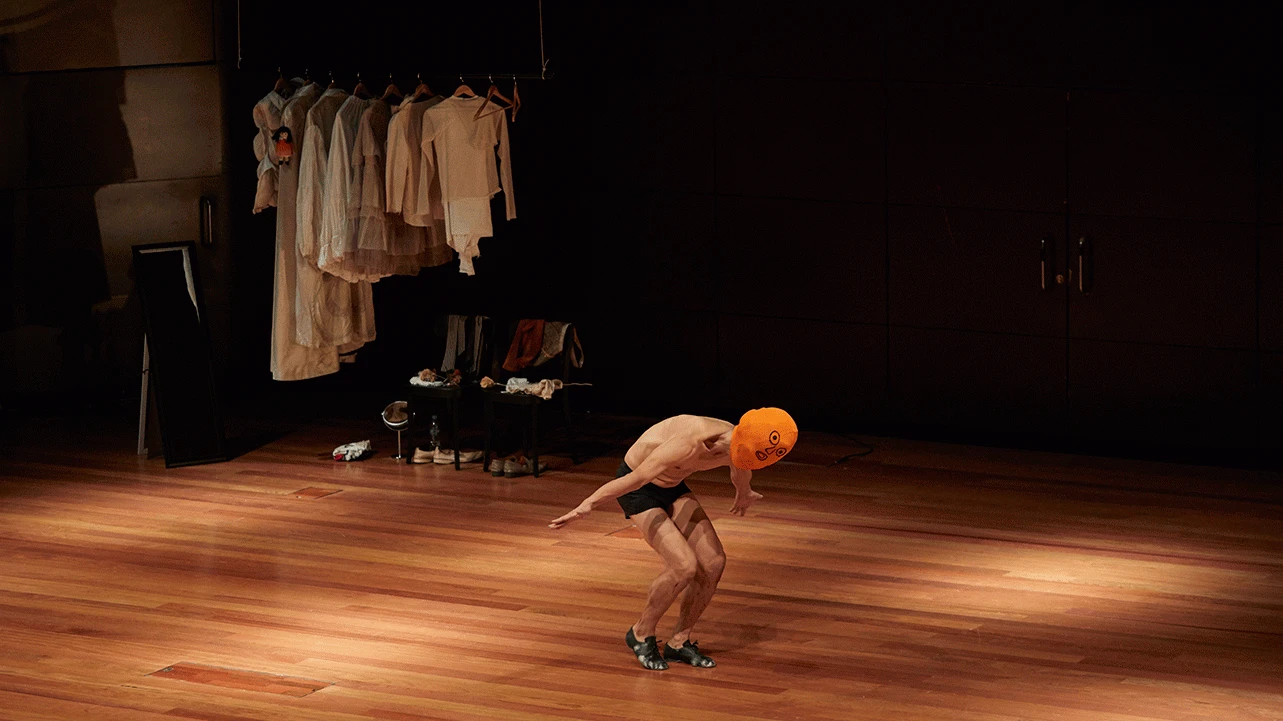
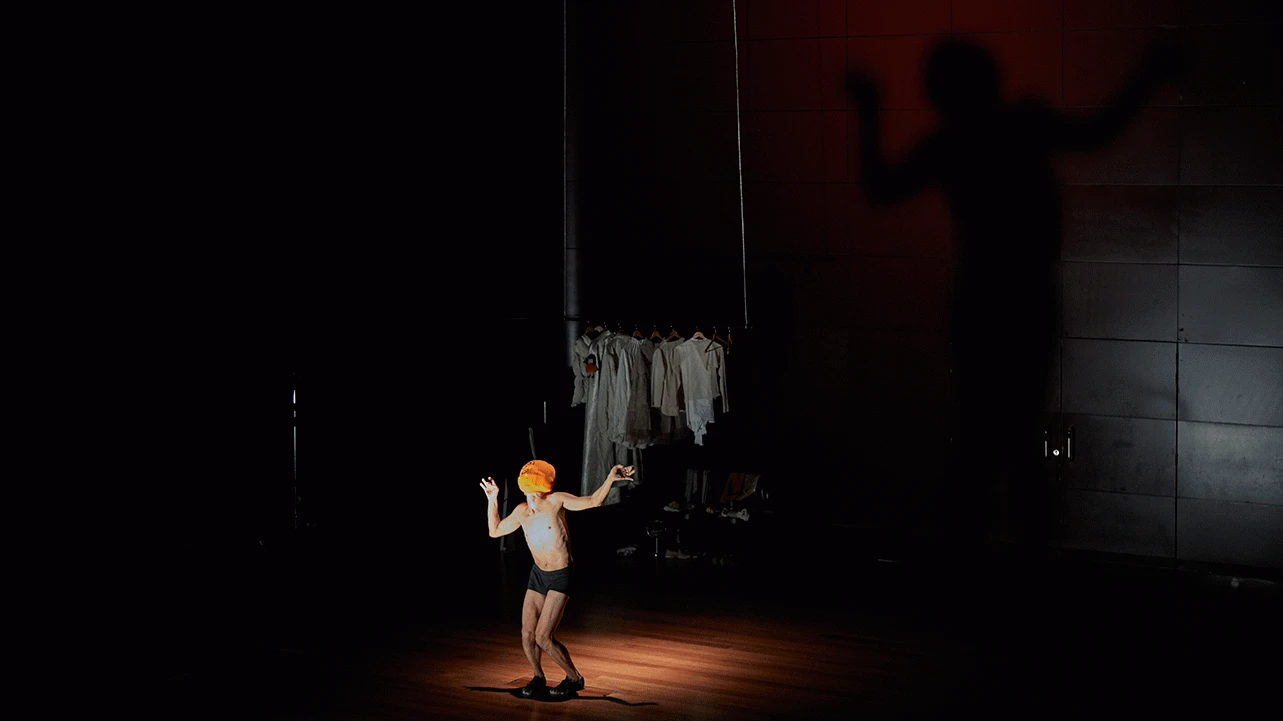
Más actividades
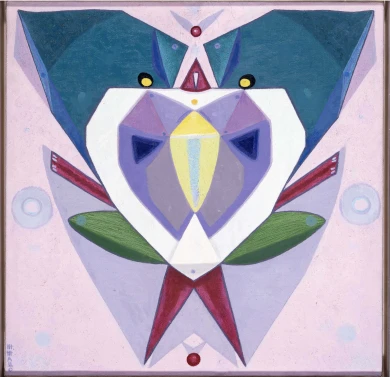
Estrella de Diego Lecture. Holding Your Brain While You Sleep
Wednesday, 3 December 2025 – 7pm
Framed inside the Museo Reina Sofía’s retrospective exhibition devoted to Maruja Mallo, this lecture delivered by Estrella de Diego draws attention to the impact of the artist’s return to Spain after her three-decade exile in Latin America.
Committed to values of progress and renewal in the Second Republic, Mallo was forced into exile to Argentina with the outbreak of the Civil War and would not go back to Spain to settle definitively until 1965 — a return that was, ultimately, a second exile.
Mallo saw out her prolific artistic trajectory with two impactful series: Moradores del vacío (Dwellers of the Void, 1968–1980) and Viajeros del éter (Ether Travelers, 1982), entering her most esoteric period in which she drew inspiration from her “levitational experiences” of crossing the Andes and sailing the Pacific. Her travels, both real and imaginary, became encounters with superhuman dimensions.
In parallel, her public persona gained traction as she became a popular figure and a key representative of the Generation of ‘27 — the other members of which also started returning to Spain.
This lecture is part of the Art and Exile series, which seeks to explore in greater depth one of the defining aspects of Maruja Mallo’s life and work: her experience of exile. An experience which for Mallo was twofold: the time she spent in the Americas and her complex return to Spain.
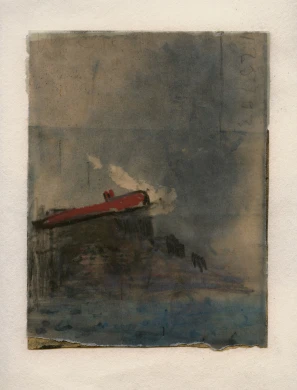
Juan Uslé. That Ship on the Mountain
Tuesday, 25 November 2025 – 7pm
Ángel Calvo Ulloa, curator of the exhibition Juan Uslé. That Ship on the Mountain, engages in conversation with artist Juan Uslé (Santander, 1954) in the Museo’s Auditorium 400 to explore in greater depth the exhibition discourse of this anthological show spanning four decades of Uslé’s artistic career.
The show casts light on the close relationship Uslé’s work bears to his life experiences, establishing connections between different stages and series which could ostensibly seem distant. Framed in this context, the conversation looks to explore the artist’s personal and professional journey: his memories, experiences of New York, his creative process, conception of painting, and ties with photography and film, and the cohesiveness and versatility that characterise his art. Key aspects for a more in-depth understanding of his artistic sphere.
The conversation, moreover, spotlights the preparatory research process that has given rise to this exhibition to grant a better understanding of the curatorial criteria and decisions that have guided its development.
These inaugural conversations, part of the main working strands of the Museo’s Public Programmes Area, aim to explore in greater depth the exhibition narratives of the shows organised by the Museo from the perspective of artists, curators and specialists.

Fifteenth Edition of the Márgenes Festival
Sunday, 23 November 2025 - 7:30pm
This year’s opening night of the fifteenth edition of the Márgenes International Contemporary Film Festival will take place inside the Museo Reina Sofía. The inaugural session will witness artists Neutro Gris and Nodoaviom perform, live and for the first time, the multimedia performance Music 4 Salvation, which extends their language towards a sensorial experience fusing sound, image and digital emotion.
Music 4 Salvation unfolds as a sound and visual collage in which different strands are linked in one sole narrative of youth and adulthood, notions from which the piece puts forward a second reading of popular symbology and iconography and culminates by evoking the transitional time between these two stages of life. And all from a post-internet gaze and found footage aesthetics.
The Márgenes Festival is held from 23 to 30 November in Madrid and shines a light on innovative initiatives that combine up-and-coming and acclaimed talent. Its film programme explores the convergence of cinema, the visual arts and sound art with approaches that expand the limits of the film experience, encompassing screenings, audiovisual shows, performances, encounters and sessions for children. In addition to the opening event, the Museo also welcomes, among the organised activities this year, the series Emotional Interface. The Films of Metahaven.
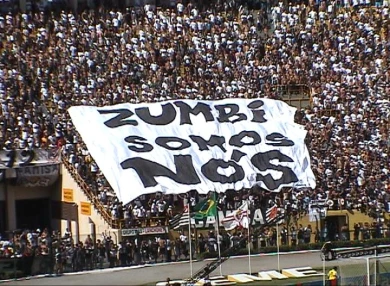
The History and Roots of Samba
Saturday, 22 November 2025 – 6pm
Museo Situado and the Maloka Brazilian Cultural Association come together to offer this artistic, historical and social activity in conjunction with Black Consciousness Day in Brazil, which pays homage to Dandara and Zumbi dos Palmares, universal symbols of Afro-Brazilian resistance and the fight against slavery.
In the activity, dance, poetry and performance become tools of memory and resistance via a programme which surveys the history of samba, from its origins in Bahia to its consolidation in Rio de Janeiro. It features the participation of more than ten Brazilian artists and pays homage to key figures in samba such as Tia Ciata, Clementina de Jesús, Cartola, Dona Ivone Lara, Elza Soares, Martinho da Vila and Alcione.
Further, the event seeks to shine a light on the richness of Afro-Brazilian culture while opening a space of reflection on resistance to racism throughout history and today, as well as inequality and disregard. In the words of philosopher Sueli Carneiro (2000), “the fight for the rights of black women and the community of African descent is inseparable from the rescue of history and the memory of our ancestors”. It is an artistic and vindicatory celebration that invites the whole community to aquilombarse: to come together, celebrate and affirm collective memory, for, as sociologist Florestan Fernandes (1976) affirmed, “the history of peoples of African descent can only be understood through the active resistance to oppression”. Long live Dandara. Long live Zumbi. Long live Afro-Brazilian ancestry.
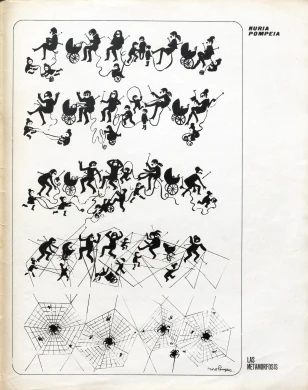
Crossed Vignettes
Friday, 21 November 2025 – Check programme
The Crossed Vignettes conference analyses the authorship of comics created by women from an intergenerational perspective and draws from the Museo Reina Sofía Collections. Across different round-table discussions, the programme features the participation of illustrators Marika, Carla Berrocal, Laura Pérez Vernetti and Bea Lema and researchers Viviane Alary, Virginie Giuliana and Elisa McCausland.
The aim of the encounter is twofold: to explore in greater depth the different forms in which women comic book artists have contributed to developing a counterculture; namely, the appearance of ruptures, reformulations and new genres within the ninth art. And to set up a dialogue which ignites an exploration of genealogies linking different generations of artists.
Moreover, the activity is put forward as a continuation to the exhibition Young Ladies the World Over, Unite! Women Adult Comic Book Writers (1967–1993) and the First International Conference on Feminist Comic Book Genealogies, held in April 2024 at the Complutense University of Madrid.
In redefining the visual narratives of the comic book and questioning gender stereotypes in a male-dominated world, women comic book writers and artists have impelled greater visibility and a more prominent role for women in this sphere. The study of intergenerational dialogue between female artists past and present enables an analysis of the way in which these voices reinterpret and carry the legacy of their predecessors, contributing new perspectives, forms of artistic expression and a gender-based hybridisation which enhances the world of comics.
The conference, organised jointly by the Museo Reina Sofía and Université Clermont Auvergne/CELIS (UR4280), features the participation of the Casa de Velázquez and is framed inside the context of the CALC programme The Spanish Artistic Canon. Between Critical Literature and Popular Culture: Propaganda, Debates, Advertising (1959–1992), co-directed by Virginie Giuliana. It is also the outcome of the projects Horizon Europa COST Actions iCOn-MICs (Comics and Graphic Novels from the Iberian Cultural Area, CA19119) and COS-MICs (Comics and Sciences, CA24160).
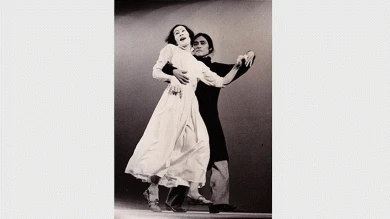



![Miguel Brieva, ilustración de la novela infantil Manuela y los Cakirukos (Reservoir Books, 2022) [izquierda] y Cibeles no conduzcas, 2023 [derecha]. Cortesía del artista](https://recursos.museoreinasofia.es/styles/small_landscape/public/Actividades/ecologias_del_deseo_utopico.jpg.webp)
![Ángel Alonso, Charbon [Carbón], 1964. Museo Reina Sofía](https://recursos.museoreinasofia.es/styles/small_landscape/public/Actividades/perspectivas_ecoambientales.jpg.webp)